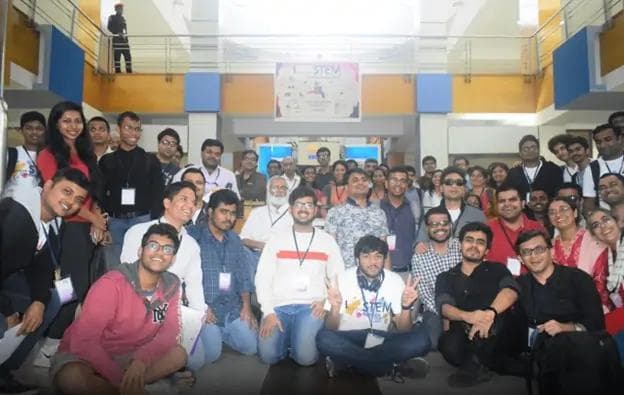Most Video Content Created in the Summer Months, Finds Veritas Research
Most Video Content Created in the Summer Months, Finds Veritas Research
Published by Gbaf News
Posted on August 16, 2018

Published by Gbaf News
Posted on August 16, 2018

Always in Season: Data Genomics Index reviews the rhythm of data creation throughout the year
With one of the hottest summers on record in the UK well underway, the general population is taking time out of their routine to soak up the rays.
What many don’t realise is that the information we create is also changing based on our habits at different times of year.
Whether a video of a first-time surfer on their holidays or a panoramic at an industry conference, modern-day smartphones and cameras not only produce crystal-clear images, but also unstructured data in huge quantities. Data continues to grow at an annual rate of 49 percent globally, and the Data Genomics Index from Veritas Technologies, a leader in enterprise data protection and software-defined storage, reveals how this growth reflects the rhythm of workers’ life throughout the year.
Summer: creating memories
With longer days and warmer nights, over two-thirds (68 percent) of all videos are created in the summer months. From serene ocean views, barbeque parties, alfresco dinners and even gentle strolls during your lunch break, capturing memories on smartphones has become synonymous with the holiday season.
Autumn: productivity prevails
Freshly recovered after the summer holidays, autumn is the most productive time of year when it comes data creation. During these months, nine in ten (91 percent) text files and nearly half (48 percent) of all spreadsheets are created. This deluge of data growth has a huge impact on IT teams that are responsible for ensuring data is protected, stored and managed efficiently and effectively.
Winter: it’s the season to backup data
As the temperatures drop, the computers are still running hot. The short winter days are increasingly spent backing up data, and as a result, data backups grow by an enormous 756 percent during these months.
As the lines between devices used for work and play become increasingly blurred, it’s not uncommon to see more and more employees’ personal data become entangled into corporate data on company systems and servers. This can have a huge impact a company’s storage capacity and create many challenges for IT.
“Data growth continues to accelerate, but in new ways. A ‘save-it-all’ strategy is short-sighted and has already proven ineffective: compressed files will never compensate for the soaring volume (and density) of data that’s being created. And investing in more storage can be expensive and anything but strategic,” explains Jason Tooley, vice president, Northern Europe, Veritas. “Instead, organisations must implement technologies that enable them to better manage their data, such as archiving tools that can handle data bursts and support automatic deletion and migration of less critical information.”
Always in Season: Data Genomics Index reviews the rhythm of data creation throughout the year
With one of the hottest summers on record in the UK well underway, the general population is taking time out of their routine to soak up the rays.
What many don’t realise is that the information we create is also changing based on our habits at different times of year.
Whether a video of a first-time surfer on their holidays or a panoramic at an industry conference, modern-day smartphones and cameras not only produce crystal-clear images, but also unstructured data in huge quantities. Data continues to grow at an annual rate of 49 percent globally, and the Data Genomics Index from Veritas Technologies, a leader in enterprise data protection and software-defined storage, reveals how this growth reflects the rhythm of workers’ life throughout the year.
Summer: creating memories
With longer days and warmer nights, over two-thirds (68 percent) of all videos are created in the summer months. From serene ocean views, barbeque parties, alfresco dinners and even gentle strolls during your lunch break, capturing memories on smartphones has become synonymous with the holiday season.
Autumn: productivity prevails
Freshly recovered after the summer holidays, autumn is the most productive time of year when it comes data creation. During these months, nine in ten (91 percent) text files and nearly half (48 percent) of all spreadsheets are created. This deluge of data growth has a huge impact on IT teams that are responsible for ensuring data is protected, stored and managed efficiently and effectively.
Winter: it’s the season to backup data
As the temperatures drop, the computers are still running hot. The short winter days are increasingly spent backing up data, and as a result, data backups grow by an enormous 756 percent during these months.
As the lines between devices used for work and play become increasingly blurred, it’s not uncommon to see more and more employees’ personal data become entangled into corporate data on company systems and servers. This can have a huge impact a company’s storage capacity and create many challenges for IT.
“Data growth continues to accelerate, but in new ways. A ‘save-it-all’ strategy is short-sighted and has already proven ineffective: compressed files will never compensate for the soaring volume (and density) of data that’s being created. And investing in more storage can be expensive and anything but strategic,” explains Jason Tooley, vice president, Northern Europe, Veritas. “Instead, organisations must implement technologies that enable them to better manage their data, such as archiving tools that can handle data bursts and support automatic deletion and migration of less critical information.”
Explore more articles in the Technology category











